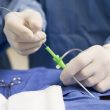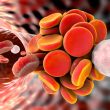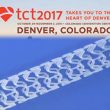Courtesy of Dr. Pablo Baglioni. This is a prospective observational study with a 1-year follow-up analyzing 2062 patients with acute coronary syndrome (ACS) who have been treated with coronary angioplasty using new-generation drug-eluting stents (DES). Patients were included between December 21, 2012 and August 25, 2015. On May, 2014, due to changes in international guidelines, clopidogrel<a href="https://solaci.org/en/2017/12/15/clopidogrel-or-ticagrelor-in-patients-with-acute-coronary-syndrome-treated-with-new-generation-des-change-dapt/" title="Read more" >...</a>
6 articles on Total Chronic Occlusions that you can not stop reading
1) Radiation Exposure in Chronic Total Occlusions Even in the hands of experienced operators, rechanneling and angioplasty of a chronic total occlusion (CTO) results in patients and the whole cath lab team receiving high doses of radiation, according to this registry presented at the American Heart Association 2017 Scientific Sessions. Read more 2) Should We Begin to Use IVUS in CTO?<a href="https://solaci.org/en/2017/12/12/6-articles-on-total-chronic-occlusions-that-you-can-not-stop-reading/" title="Read more" >...</a>
Complex PCI: DAPT defining factor?
Courtesy of Dr. Alejandro Lakowsky, MTSAC. The Journal of the American College of Cardiology (JACC) has recently published a study on the role of coronary anatomy and PCI technical difficulty in the cost benefit ratio of prolonged vs. short post procedural DAPT. This study was carried out by Robert Yeh, Laura Mauri and the DAPT trial<a href="https://solaci.org/en/2017/12/12/complex-pci-dapt-defining-factor/" title="Read more" >...</a>
Peripheral Vascular Disease Is Associated to More Events in TAVR
Courtesy of Dr. Carlos Fava. The incidence of peripheral vascular disease (PVD) is increasing and associated with negative outcomes when overlapping with cardiovascular disease. In patients undergoing TAVR, its prevalence varies between 28% and 42%, according to different studies. However, its real impact on the rate of survival is still unclear. This study analyzed 27,440 patients >65 years<a href="https://solaci.org/en/2017/12/11/peripheral-vascular-disease-is-associated-to-more-events-in-tavr/" title="Read more" >...</a>
Non-Invasive FFR: CT Evolves from Anatomical to Functional
In the US, more than 4 million patients with chronic stable angina are looking to rule out heart disease. Most undergo functional diagnostic studies that might lead to invasive coronary angiography followed by revascularization. CT has become an alternative diagnostic tool thanks to its precision to rule out heart disease (negative predictive value between 97<a href="https://solaci.org/en/2017/12/01/non-invasive-ffr-ct-evolves-from-anatomical-to-functional/" title="Read more" >...</a>
7 articles on angioplasty that can draw your attention
1) Balloon Angioplasty: A Reasonable Plan B for Chronic Thromboembolic Hypertension Thromboembolic pulmonary hypertension is caused by pulmonary artery stenosis caused by organized thrombi. The only treatment potentially healing for this disease is surgical thrombectomy. However, patients with lesions in very peripheral branches or high surgical risk patients with comorbidities might benefit from a plan B,<a href="https://solaci.org/en/2017/11/27/7-articles-on-angioplasty-that-can-draw-your-attention/" title="Read more" >...</a>
Latest articles about peripheral vascular diseases
1) Efficacy of Micromesh-Covered Stents in Carotid Artery Stenting Most literature, old and recent, associates carotid artery stenting with a higher rate of stroke (although minor) when compared with carotid endarterectomy during the acute period. However, 30-day outcomes of angioplasty and surgery are comparable. Read more 2) Multivessel Disease and Severe Carotid Stenosis: How to Proceed Myocardial revascularization surgery (CABG) is<a href="https://solaci.org/en/2017/11/22/latest-articles-about-peripheral-vascular-diseases/" title="Read more" >...</a>
DKCRUSH-V: Left Main, Not Just Another Bifurcation
Cardiac Artery Bypass Graft Surgery has been shown more effective than percutaneous coronary intervention (basically because it renders lower revascularization rate) in patients with severe left main bifurcation lesions receiving 1st generation drug eluting stents. This is why the 2014 American guidelines recommend CABG for most patients. But the EXCEL and the NOBLE trials brought back hope to<a href="https://solaci.org/en/2017/11/22/dkcrush-v-left-main-not-just-another-bifurcation/" title="Read more" >...</a>
Ischemic and Bleeding Risk After Primary Angioplasty
Patients with ST-segment elevation myocardial infarction who undergo primary angioplasty are at high risk for both ischemic and bleeding events, which affect significantly both morbidity and mortality. An optimal selection of antithrombotic therapies in terms of strength and duration must take into account the timing for the procedure, since the risk for these complications may<a href="https://solaci.org/en/2017/11/22/ischemic-and-bleeding-risk-after-primary-angioplasty/" title="Read more" >...</a>
ABSORB II: No Benefits from Scaffolds After Complete Bioresorption
Courtesy of the SBHCI. The ABSORB II study sought to assess the mechanical properties of everolimus-eluting bioresorbable scaffolds, such as the increase in minimal lumen area and the recovery of the vasomotor properties of the treated artery. Last year saw the publishing of negative results for the primary endpoints, registering a higher rate of complications at<a href="https://solaci.org/en/2017/11/02/absorb-ii-no-benefits-from-scaffolds-after-complete-bioresorption/" title="Read more" >...</a>









